It’s the time of year for saving money!
A bunch of years ago I had an interesting learning experience with regards to surround sound music. I was in the midst of my run working with DTS — I was their external publicity and marketing communications consultant for about eight years, for those of you who didn’t know this — and I was getting very seriously into the whole surround sound thing. By “into it” I mean into it well beyond the call of duty for work; I was actively collecting all the surround sound music I could get my hands on by the artists I loved. I was — and remain — passionate about the technology. If your system is set up correctly and the mixes done properly, a surround sound listening experience can be revelatory.
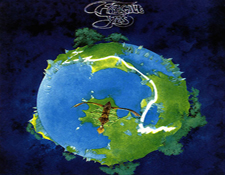 When I finally found a copy of Yes’ Fragile on the wonderful-but-woefully-under-distributed-and-poorly-marketed high resolution DVD Audio Disc format, I was in Prog Rock heaven — “Prog Heaven,” if you will, which is a little like “Hog Heaven” … only different.
When I finally found a copy of Yes’ Fragile on the wonderful-but-woefully-under-distributed-and-poorly-marketed high resolution DVD Audio Disc format, I was in Prog Rock heaven — “Prog Heaven,” if you will, which is a little like “Hog Heaven” … only different.
The 5.1 surround sound mix put me inside the band and sounded bigger and wilder than even the best of stereo LP pressings I had of the album.
I was so excited I invited one of my music buddies — Johannes who is at least as big a Yes fan as I am, more-so in some ways — over to hear the surround mix. I plopped Johannes down in the sweet spot in my living room home theater set up and we listened together, me glancing nervously at his reactions to the new recording. In short order, he started picking apart the mix and to my utter disappointment telling me all the reasons it sucked.
In short, he hated the new sound applied to the album. He said was hearing details in the mix that weren’t on the original stereo version. He was also not hearing things he expected to hear.
Needless to say, my surround-sound buzz-bubble was burst for that moment.
Then I played him the bonus track of the 5.1 mix of Yes’ stunning interpretation of Paul Simon’s “America” — a song from the time period which appeared on the Yesterdays LP compilation.
He hated that even more …
I gave up at that point, not fully understanding his perspective — I thought it sounded pretty dang cool…. different, but cool. But I let all of that experience sink in and continued to dangle 5.1 goodies his way when possible.
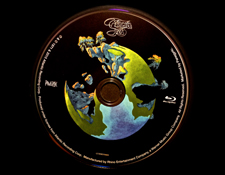 Fast forward ten plus years and here I am reviewing the new Steven Wilson-helmed remix of Fragile both in Stereo and 5.1 surround sound. And listening to it, I now fully get what Johannes was upset about, especially when you do an A/B comparison of the mixes.
Fast forward ten plus years and here I am reviewing the new Steven Wilson-helmed remix of Fragile both in Stereo and 5.1 surround sound. And listening to it, I now fully get what Johannes was upset about, especially when you do an A/B comparison of the mixes.
But I was not quite so surprised to discover that Mr. Wilson got the surround mix “right” — if you will — this time as he has no doubt established a niche as the meister-re-mixer supremo, the go to guy that (seemingly) all the progressive music makers trust their life’s work. The reason why he is so successful at what he does — in the face of stellar remixes by some of the best audio engineers in music history — has never been more apparent than on this new edition.
Why? Because on the Blu-ray Disc version of this reissue of Fragile you get not only his stereo and 5.1 remixes — which remain true to the original intent of the original 1971 mixes done by Yes and its producer Eddie Offord — and a flat transfer of the original stereo mix, but you also get the 5.1 mix from Rhino’s 2002 DVD Audio edition! So now you can quite quickly (depending on the capabilities of your player) switch between the mixes to compare and contrast the differences.
Now, mind you, I’ll defend my original opinion of that 2002 DVD Audio mix — I DO still like it because it IS so different. Just like Mickey Hart’s reinventions of The Grateful Dead’s seminal albums Workingman’s Dead and American Beauty, the 2002 edition of Fragile was indeed a re-make / re-model situation. That was the prevailing thought of the day that the surround mixes SHOULD be different.
The only problem with it, of course — and that is perhaps where the industry failed a bit, drinking its own Kool Aid — is that when it comes to reissues, the buying public by-and-large doesn’t really seem want anything quite THAT different for their day to day listening. Some of those listeners do want a surround sound experience. And they want to hear things in the best possible sound quality. But they want to hear their old favorites in a manner that still recalls the music they know and love, the sound they grew up on.
Enter Steven Wilson who broke into this industry that was already teaming — yes, teaming — with all manner of audiophile-friendly engineering experts in 5.1 surround sound. Heck, the industry had grown to a point where for several years there was even a surround sound trade show with much excitement and ballyhoo ensuing at these events (Awards! Celebrities! Parties!). Some of those early surround sound mixes were cool, mind you and remain so — from Queen’s Night at the Opera to exclusive quadrophonic and 5.1 releases by none other than Frank Zappa.
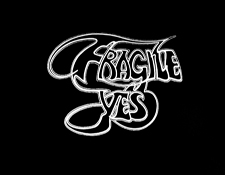 And yet still, the industry seemed to flounder and perhaps coincidentally many seminal artists held off on letting their recordings be touched. Things changed years many later when the fledgling Mr. Wilson convinced none other than Robert Fripp of King Crimson fame that surround sound could be a good thing if it was done a certain way. Wilson’s sonic successes with the King Crimson catalog opened the vault floodgates to all manner of classic progressive music makers who wanted their beloved master tapes given his special touch. Mr. Wilson has subsequently done seminal remixes for high profile bands including Jethro Tull, XTC, Emerson Lake & Palmer, Tears for Fears, Gentle Giant and many others (including his own band Porcupine Tree). Oh, yeah, and of course he has done the stellar remixes of albums by Yes including The Yes Album, Close to the Edge and Relayer.
And yet still, the industry seemed to flounder and perhaps coincidentally many seminal artists held off on letting their recordings be touched. Things changed years many later when the fledgling Mr. Wilson convinced none other than Robert Fripp of King Crimson fame that surround sound could be a good thing if it was done a certain way. Wilson’s sonic successes with the King Crimson catalog opened the vault floodgates to all manner of classic progressive music makers who wanted their beloved master tapes given his special touch. Mr. Wilson has subsequently done seminal remixes for high profile bands including Jethro Tull, XTC, Emerson Lake & Palmer, Tears for Fears, Gentle Giant and many others (including his own band Porcupine Tree). Oh, yeah, and of course he has done the stellar remixes of albums by Yes including The Yes Album, Close to the Edge and Relayer.
Fragile is his latest master re-work and it does not disappoint. Here you get the full rock splendor of Fragile in 5.1 surround yet it still sounds like the Fragile album we all love. That said, now with this easy ability to A/B the new and old surround mixes, I can say I still like the old DVD-A mix for the wacky variety it offers.
On it, Jon’s voice has church-like ambiance added. The drums are mixed way up some tracks where previously drums almost didn’t exists (“We Have Heaven”). Bill Bruford’s “Five Percent For Nothing” on the DVD-A mix is almost as insane as Elliot Scheiner’s incredible-but-wonderfully-mad surround mix for The Flaming Lips Yoshimi Battles The Pink Robots which — on Pt 2 of that title tune, which literally moves an entire drum kit around the listener in time with the song!
]]>Clearly trying to avoid being more preposterous than that, Steven Wilson took a more sane approach to this inherently manic song, putting one of each of the instruments playing in each corner of the room throughout its duration. Thus, the listener remains immersed, but can focus more on the crazed brilliance of the song and the musicianship of the band members, and less on the wizardry of the mix-down engineer.
And there-in lies some of the difference, in a nutshell.
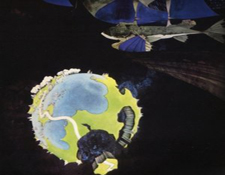 So, what do I ultimately think about this new Steven Wilson 5.1 mix? I like it a whole bunch! I mean…. and I am not being smug or snarky here… but it sounds like Yes’ Fragile in surround sound! Its is not gimmicky. It is tasteful. Wilson was judicious in his use of the surround sound fields, and wisely keeps the rhythm section and lead vocals in the front channels.
So, what do I ultimately think about this new Steven Wilson 5.1 mix? I like it a whole bunch! I mean…. and I am not being smug or snarky here… but it sounds like Yes’ Fragile in surround sound! Its is not gimmicky. It is tasteful. Wilson was judicious in his use of the surround sound fields, and wisely keeps the rhythm section and lead vocals in the front channels.
But, is it boring or predictable, you ask?
No, not at all. It is just that you can sit back and bask in the warmth of that familiar glow of a supremely familiar album, relishing the details percolating around you without detracting from the original sonic concept of the album.
And, there no doubt was an original concept to that album. You can really hear just how fine tuned the sound of Fragile was by listening to the many rough- and rehearsal- mixes provided on this disc. There you’ll learn how a short track like “We Have Heaven” actually was at one point a much longer exercise — wisely, the band and producer Eddie Offord whittled it down to the minute or two of essential music before cleverly cutting to the next song…
For me, however, by far the most astounding bonus on this wonderful reissue is the inclusion of a long forgotten and previously unreleased out-take called “All Fighters Past.” This is an early — and sincerely rocking! — workout of musical ideas that ended up on later Yes albums (Close to the Edge, Tales From Topographic Oceans) and frankly it smokes. This rawk-ing little number should have at least been a single B-side — even in this somewhat incomplete form — as it really shows how at its root Yes was a stellar rock band even before all the progressive ideas completed the group’s musical formula. I also love the a-capella mix of “We Have Heaven” which showcases how stunning Jon Anderson’s vocal ideas were and still are.
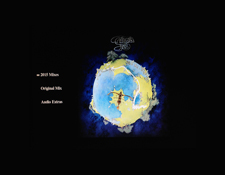 There is much other nifty goodness on this reissue including a flat transfer — which means there is no compression applied, so you may need to adjust your volume upward accordingly — of the original 1971 album mix at 192 kHz, 24 bit resolution. On this you can clearly hear a wee bit of tape print-through — sometimes called “bleed-through” — a phenomenon inherent in the storage of magnetic tape reels that can results in a bit of a recording imprinting itself upon itself when rolled up tightly on its storage reels. Thus as the door closes on “Heart of the Sunrise” you hear a bit of echo and correspondingly, you get a tiny pre-echo of the “We Have Heaven” reprise before the song begins!
There is much other nifty goodness on this reissue including a flat transfer — which means there is no compression applied, so you may need to adjust your volume upward accordingly — of the original 1971 album mix at 192 kHz, 24 bit resolution. On this you can clearly hear a wee bit of tape print-through — sometimes called “bleed-through” — a phenomenon inherent in the storage of magnetic tape reels that can results in a bit of a recording imprinting itself upon itself when rolled up tightly on its storage reels. Thus as the door closes on “Heart of the Sunrise” you hear a bit of echo and correspondingly, you get a tiny pre-echo of the “We Have Heaven” reprise before the song begins!
If you — like me — get a kick out of noticing little details like this, you are definitely an audio geek. This little detail is not on my US LP, nor did I find it spot checking Steven Wilson’s new stereo mix, the 2002 Rhino DVD Audio stereo mix or the original UK LP needle drop.
Speaking of the “needle-drop,” I should mention that you do get such a version of the album on the Blu-ray disc : a simple clean recording of an original UK vinyl first pressing transferred to digital at 24-bit, 96-kHz resolution. The original LP mix in an uncompressed, 24-bit, 192 kHz form is also included and it sounds just tremendous, huge and fat (replete with a bit of inevitable audible tape hiss).
Listening to the new stereo mix compared to the original mix is revelatory in its nuance. For example, on Rick Wakeman’s side one solo-synthesizer classical-gasser “Cans & Brahms,” there has always been a fair amount of distortion which I always assumed was either (a) my used LP pressings or (b) some playback issue that I was having with tracking on my cartridge / turntable or playback issues via my speakers or amplifier or some other such nonsense.
I never stopped to consider that: ‘hey dummy, this might be a problem with the original recording.
Insert Homer Simpson awareness moment: Doh!
On the new 2015 Wilson version you no longer hear that distortion. I’m not sure if this clarity has to do with Mr. Wilson getting back to the original master multi-tracks and being able to remix it sans over-saturation, or if there was some sort of digital clean up necessary on the track to remove the distortion. Whatever was done, the result is wonderful. (note: I am leaning toward the latter theory since upon listening to the stereo mix from the 2002 DVD Audio version, some of that distortion IS still there, just not a much — so perhaps in the ensuing years new audio processors have come into use that allow better clean up efforts. But again, this is just my own edjumacated guess and nothing more than that).
All this leads to the inevitable question: which one is better?
You know what? There is NO answer to that question which is why an all-in-one solution like this Blu-ray edition of Yes’ Fragile is so brilliant.
Now, you can pretty much have all the different versions, albeit in a digital but high resolution form. For those of you who still love your vinyl, you probably already have a nice clean copy or at least a version you like. At present I have less than mint versions of the UK and US pressings, a seemingly A1/B1 UK and a white label promo for the US edition which compare favorably and have a warm sound all their own influenced by my cartridges and pre-amps used for playback (Grado, Goldring, Sumiko, Bellari). So you see, its fruitless for one to argue which one is better at this point — it all pretty much comes down to a matter of what you like. That said, I once had a Japanese pressing of Fragile that I got rid of as it didn’t sound any better than my other pressings, and some ways sounded worse with an uncomfortable high end.
There is one thing that this great new reissue of Fragile doesn’t have, however and that is the dumb-but-wonderful rough animation of Roger Dean’s little cosmic airplane (from the cover of the album) which acts as a fun screen saver on the 2002 DVD Audio Disc version of Fragile. Its really cool to see the plane flying around on your TV screen, circling the Fragile planet.
Actually, lets make that TWO things that this reissue doesn’t have: on the DVD Audio disc there is also a lovely photo gallery of REALLY COOL photos of the band from the period (including images of the stage show of the time!) which really should have been included here somehow. Unless its a hidden Easter Egg or I missed something staring at me right in the face, I haven’t found any additional information hinting at its existence on this new disc.
And while the artwork quality is excellent on this new disc — they even reproduce the little booklet of Roger Dean artwork that was in the original edition (albeit in miniature) — you will still want to hold onto your original copies on vinyl LP. Having the full scale artwork of any albums featuring Roger Dean’s artwork is a lot of fun in its own right.
Other than those little nitty-picks, Fragile on Blu-ray Disc gets my heartfelt applause as a robust and hardy addition to the family of fine reissues being driven by Mr. Wilson.
Onward now to Tales From Topographic Oceans… please!






